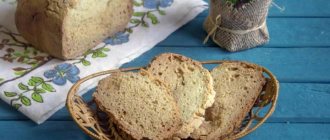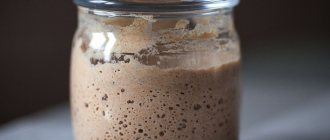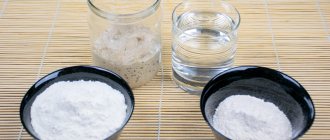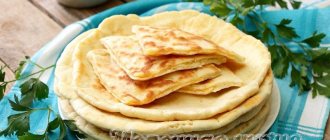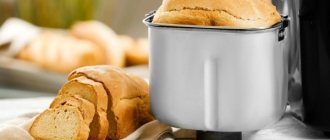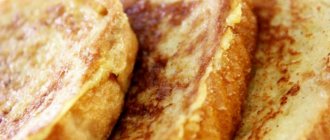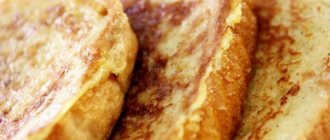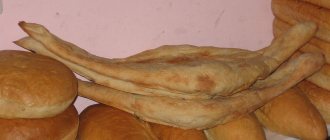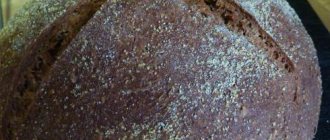Recently, among followers of the ideas of proper and healthy nutrition, the opinion of experts about the benefits of homemade yeast-free bread has become very popular. Natural sourdough for baking can be created from almost all fruits and vegetables. However, the most famous and widespread among home cooks is hop sourdough for bread, the recipe for which we suggest reading below.
The best hops for baking bread, according to experts, are wild ones, which are usually collected in August during the period of its technical ripeness and dried at low temperatures in the shade. However, some recipes also use pharmaceutical grade (from a pack). How is hop sourdough bread made? You can find the recipes in this article and choose according to your taste.
How to prepare a standard liquid hop starter?
The recipe for hop starter for yeast-free bread (liquid) involves the following steps:
- In the evening, hop cones (ripened and dried) are poured with boiling water (a 1:2 ratio is used, i.e. for 1 glass of cones you should take two glasses of boiling water, for a half-liter jar of cones - one liter of boiling water, etc.).
- The pine cones poured with boiling water are boiled for 20 minutes, wrapped in a towel and left overnight. In the morning they are filtered through cheesecloth or a fine sieve.
- Next, add sugar (or honey) and flour to the broth. The prescribed ratio of ingredients looks like this: add two tablespoons of sugar and half a glass of flour to each glass of broth.
- The resulting mixture is well wrapped and placed in a warm place for fermentation for 2-3 days. Every day the mixture must be heated in a water bath and stirred continuously (otherwise the settled flour may burn) until many bubbles appear and the taste acquires a characteristic bitterness. If you stop heating the mixture, the fermentation process will stop.
If the starter still tastes sweet, this means that the fermentation process is not yet complete. This starter is stored in the refrigerator, in hermetically sealed bottles and jars. The recipe for bread with hop sourdough (liquid) provides the following product consumption: 1 cup of hop yeast per 2-3 kg of flour, add more flour for mixing. When baking Easter cakes or other baked goods, it is recommended to add a little more liquid leaven (about half a cup) to improve the rise of the dough.
Harm
It is noteworthy that a single starter does not cause harm to the human body. But those who are gluten intolerant or who have allergic reactions to lactose should not consume baked goods. It is important that cooking sourdough bread does not affect the calorie content of the final product. For this reason, those who want to lose extra pounds need to take this fact into account. Sourdough bread is considered healthier than yeast bread.
Store-bought starters are used in dietary nutrition. By using them you can easily prepare delicious bread without yeast. Since ancient times, bread has been a cult product in Russia. And thanks to these cooking methods, it becomes both tasty and healthy.
Preparing the dry mixture
A recipe for hop sourdough bread may call for the use of a dry product.
Dry sourdough is prepared as follows:
- Instead of flour, bran is added to the decoction of hop cones (strained) (you should use such an amount of bran that they can absorb all the liquid).
- The mixture is mixed well and sent to a warm place for fermentation for 3 days. The starter must be stirred periodically. The product is considered ready if it has a not entirely pleasant characteristic sour odor.
- The bran (fermented) is scattered in a thin layer on the surface of the table (or any other suitable surface) to dry.
- The dried starter is placed in a hermetically sealed container and stored outside the refrigerator for a long time.
Before using it overnight, pour it with warm water (one teaspoon of starter per half a glass of water), add a little flour and stir until it reaches the consistency of sour cream. The next morning the mixture should foam. After that, water, salt and flour are added to it and the dough is kneaded.
Composition and properties
This fermentation product is used during the preparation of bread; it replaces yeast. As soon as the lactic acid bacteria present in the starter mature, they react with flour starch. As a result, the formation of easily digestible slow carbohydrates, as well as alcohol, occurs. It is noteworthy that bread prepared in this way, when yeast is added at first, will simply absorb it completely - they will dissolve in lactic acid bacteria.
The benefits and harms of live sourdough bread are directly related to the fact that the product is easily digestible. It is prepared quite simply at home. A powder mixture is also available in stores.
The composition of an industrial baked product of this type will differ from a home-made product in that it will contain buttermilk. This is a fermented milk product that contains a small proportion of fat - approximately 0.5%. Buttermilk in store-bought starters provokes fermentation in the dough.
The buttermilk concentration in commercial formulas is approximately 6%. In addition, the product contains rye and wheat grains, wheat bran and water. The grains along with buttermilk are biologically active due to their special chemical composition.
How to make a finished product?
A recipe for baking bread from hop sourdough often calls for the use of the finished product. What is a ready-made hop starter? Usually this is a small piece of dough, previously prepared with hops, or purchased from a monastery or church.
After preparing the dough, cut a piece from it, place it in a container covered with a lid or a plastic bag and put it in the cold (in the refrigerator). The size of the piece can be very small, for example, 1 cubic meter. cm.
Before use, the starter is placed in a container in which the dough will be kneaded, filled with warm water, stirred well, a little flour is added and left in a warm place. Every one to two hours you need to add flour and water to the starter. Gradually it is brought to the desired volume. Bread baked with such sourdough tastes more sour than bread baked with a fresh liquid hop base. In addition, you should take into account that it will take a little longer to germinate.
How does yeast affect the body?
Since the beginning of the last century, specialists and adherents of healthy eating have been discussing what types of bread can be considered healthy. According to supporters of baking yeast-free bread, yeast fungi (store-bought yeast, dry yeast in packages), entering the human body, can gradually accumulate, thereby destroying beneficial microflora, both in the stomach and intestines, thereby undermining the immune system and affecting our general well-being.
Regular consumption of fermented foods leads to increased fatigue and the body's susceptibility to the harmful effects of the environment.
Yeast expands in the gastrointestinal tract, causing flatulence and constipation. However, this is not a complete list of the negative consequences of consuming yeast products on the human body - they are also capable of provoking cellular mutations, leading to chaotic cellular reproduction, and thereby triggering tumor processes.
Taking all this into account, supporters of proper nutrition suggest completely abandoning the yeast bread offered in stores and baking yeast-free bread based on homemade sourdough.
Will such bread be healthier than what is sold in the store? This question can be answered with confidence in the affirmative, just compare the pungent smell of industrial yeast with the pleasant smell of fermented milk, rye or hop-based homemade sourdough.
What kind of starter should I use?
Typically, the preparation of rye bread involves the use of the finished product, like bread with bran. Baked goods and white bread are kneaded with fresh liquid sourdough, which has better consistency and taste. As experienced housewives assure, white bread baked with ready-made sourdough also turns out very tasty - it has a characteristic pleasant, slightly sour taste. For baking muffins and sweets, experts recommend using a liquid or dry product.
Baking secrets
When baking any of the hop sourdough bread recipes, there are some important points to consider:
- In order for the dough to rise well, place it in greased molds with no more than ½ of their volume, cover with a towel and leave for one to two hours. If the dough is placed in a warm place (about 40 degrees), it will rise faster.
- Bread should be baked at temperatures up to 200 degrees for 45-60 minutes. The finished hot bread must be removed from the mold, sprinkled with water and wrapped in a clean towel - this way it retains its softness and aroma.
- You can make the starter yourself once or purchase a ready-made monastery starter, and then simply leave a small piece of the finished dough from it - this way you will always have at hand the material necessary for the subsequent fermentation of homemade bread or any other baked goods.
- Some housewives recommend not scraping the remaining dough from the sides of the dish, but simply carefully covering the container with a kitchen towel and using the remaining dough as a starter for the next batch.
Choice
It should be noted that the benefits and harms of rye sourdough bread made from a store-bought mixture and homemade products are unlikely to differ much. The store-bought mixture contains biologically active substances that benefit the body.
Dough from such a mixture is easy to prepare. Usually, instructions are included with the purchased mixture, and anyone can easily prepare a similar product using it. But among the disadvantages of a purchased mixture, they note the fact that it is important to first purchase yeast in order for the dough to mature.
At the same time, if the sourdough is prepared entirely on your own, you will need to spend more time and show some experience.
Thus, the benefits and harms of sourdough bread made from store-bought and homemade mixtures remain the same. If you don't have enough time, a store-bought mixture will be your best choice. If a person is interested in finding interesting flavor combinations and the effects on the benefits and harms of sourdough bread, it makes sense to start preparing the mixture yourself.
Sourdough white bread with hop sourdough: step-by-step recipe with photos
In preparing choux white bread we will use liquid hop starter.
Ingredients (for baking 3-4 loaves):
- wheat flour of the first or highest grade - 2-2.5 kg;
- liquid hop starter - 1 glass;
- drinking water;
- vegetable oil - 3-4 tablespoons;
- salt - 1-2 tablespoons;
- flax seeds or other spices - to taste.
Preparation
Usually it works like this:
- In the evening, pour about 1.5 kg of flour into a 5-7-liter pan or bowl (enamel), pour boiling water over it, mix well with a wooden spatula until all the flour is cooked.
- Add a little more flour, cold drinking water (according to the recipe), salt and mix thoroughly again, cool.
- While the dough is cooling, heat 1 cup of hop starter (liquid), which was stored in the refrigerator, in a water bath. Add it to the dough, stir, add more flour if necessary (remember, the dough should not be liquid).
- Cover it with a towel and leave overnight. If there is a shortage of time, this dough can be kneaded in the morning - some masters begin working with it after two to three hours (in particular, this is how prosphora is baked).
- By morning the dough should approximately double in volume. It is mixed, vegetable oil is added (see list of ingredients), if desired, you can also add herbs, flax or sesame seeds, sunflower or pumpkin seeds, raisins, dry basil, etc.
- Mix in a little flour and leave for another one to two hours.
- Then the dough is divided into three or four parts, each of which is kneaded separately, and placed in prepared baking dishes (half the volume is filled so that the dough has room to rise).
- Some housewives make cuts on its surface (like a loaf), some decorate it with figured dough (like in pies). The top must be oiled.
- The finished dough is covered with a towel and allowed to stand for one and a half to two hours at room temperature so that it rises properly.
- Bake at 200 degrees for 50-60 minutes.
- The finished hot bread is removed from the molds, placed on a large dish, water is sprinkled on its surface and wrapped in a towel.
White bread with bran
This product is prepared with ready-made wheat or any other hop yeast.
Step-by-step recipe for hop sourdough bread:
- In the evening, they usually make a dough: to do this, take the finished starter out of the refrigerator, place it in a container for kneading dough, dilute with warm drinking water (1 cup), mix well, add premium or first grade wheat flour (0.5 cup), 100 gram of wheat bran (sifted), knead and leave warm overnight. Experts recommend adding bran, as well as coarser flour, to the dough first (in the evening), but adding first or higher grade flour can be postponed until the morning.
- Next, proceed in the same way as the recipe given in the previous section (see above), with the only difference that in this case the flour is not brewed with boiling water. Cold boiled water is added to it.
When using this recipe, the finished products will be smaller - about 2-3 loaves of bread. If you need more baking, you can gradually increase the volume of the dough, adding flour and water to it every one to two hours - until the desired volume.
Reviews
Yeast-free bread contains many more useful elements. It is a rich source of energy. At the same time, we must not forget that it never ousted traditional yeast products from the shelves.
It is noteworthy that some people attribute small size to the disadvantages of a yeast-free product. So, if a person sees a large bread on the counter, and next to it a product that is half the size, the psychological effect will be such that he will reach for a larger product.
In addition, not everyone is accustomed to the taste of sourdough bread. Most often, such a product is dense and hard. If a person has dental problems, he is unlikely to choose such bread.
For manufacturers themselves, there are difficulties at the stage of sourdough bread production. After all, it needs more time to ripen than options with yeast. Of course, this does not detract from the final value of the product. However, making bread with yeast, where you just stir the powder and then wait and bake, is a more cost-effective process.
However, yeast-free bread continues to be actively produced, and it can be found, if not on all, then on very many shelves.
About sourdough
Hop sourdough for bread according to Sterligov’s recipe is made as follows:
- Take 50 g of hops for one and a half liters of water (well), bring to a boil and continue to simmer for 15-20 minutes.
- Next, the resulting mass is filtered through a colander, the solution is cooled to room temperature.
- Then add 100 g of honey to it and stir thoroughly.
- Next add one teaspoon of salt and 200 grams of flour (wheat). Cover with a lid and place in a warm place for 2 days (for example, on the bed of a Russian stove). The mixture must be stirred in the morning, afternoon and evening.
- After 2 days, 400 g of potatoes (boiled) are added to it, which are first grated. Stir and leave, still stirring three times a day. After a day, filter again.
The finished starter can be used immediately or stored in the basement or refrigerator. A slit must be made in the lid, otherwise the container may explode due to fermentation.
Kneading dough
After 2.5 hours, the autolysis of the dough was completed and the hop starter was ripe. After autolysis, the dough became elastic and good gluten had already formed. Now I add 50 g of hop starter to this dough and first mix everything with a scraper.
Then I transfer the dough to the table and begin intensive kneading with my hands. It is most convenient to knead such wet dough using the beating method. The duration of the kneading depends on your kneading speed. It took me about 8 minutes for the dough to become more elastic and homogeneous.
After this, I add 1 g of white unfermented malt to the dough. And I continue kneading for a couple more minutes. If you don't have white malt, you simply skip this ingredient.
And at the very end of the kneading you need to add 5 g of salt. Continue kneading until the salt is completely incorporated into the dough.
After kneading, transfer the dough to a bowl pre-greased with vegetable oil. Before starting fermentation, be sure to measure the temperature of the dough. It is very important. The temperature should not exceed 24C.
Then cover the bowl with the dough with film.
The duration of dough fermentation is from 4.5 to 5.5 hours at a temperature of +24C. During the entire fermentation period, you will need to perform several dough folds and one lamination.
About making dough and baking bread
Next, add a little wheat flour to the prepared dough and knead the dough (it should turn out elastic and lag behind your hands).
The dough is placed in bread pans and kept in a warm place until it rises. Then it is placed in the oven and baked for 30-40 minutes.
How to make yeast-free bread in a bread machine?
Those who have a programmable bread machine can take advantage of the ideal opportunity to bake sourdough bread according to individual settings. It’s as simple as shelling pears: add the ingredients, turn on the required mode, and all you have to do is wait for the sound signal.
Required ingredients:
- 45 g sourdough;
- 290 milliliters of water;
- 5 grams of sugar;
- salt (pinch);
- 110 g yeast;
- 390 g flour;
- 35 ml vegetable oil.
Technology
So, let's prepare another bread with hop sourdough. The recipe for a bread machine calls for the need to knead the dough twice to ensure the fluffiness of the loaf, with a break for proofing between kneadings.
First, leaven and water are placed in the bowl of the device, then butter is added to them (according to the recipe), bran with sugar and salt are mixed separately, flour is added and the resulting mixture is added to the liquid in the bowl. The first kneading process should last fifteen minutes, followed by proofing (1 hour), then the second kneading (5 minutes) and rising the dough (4 hours). The loaf is then baked for an hour and a half.
How to make rye sourdough for monastery bread?
The first rye sourdough takes a long time to prepare, over 4-5 days. They use good water, preferably spring water, but you can also use purified water. The glass container for the starter must have a volume of at least one and a half to two liters, otherwise the product may “run away” because it “plays” quite violently.
They work like this:
- 100 g of flour (rye) is mixed in a glass container with 100 ml of water (slightly warm). Cover with a linen napkin and send to a warm place for a day.
- On the second day, the starter is mixed well, another 100 g of flour and 150 ml of water (warm) are added. Mix thoroughly again and again send to a warm place for a day.
- On the third and fourth days, they again “feed” the starter, that is, repeat the above steps.
- On the fifth day, 100 g of the finished starter is poured into a clean jar, closed with a lid and placed in the refrigerator. Some housewives recommend leaving it near the radiator, where it will continue to ferment, which will make the bread tastier.
Mixing the starter. Day 2, 24 hours have passed
It's already been 24 hours since I started the hop starter. This will be her second shuffle. Pay attention to the starter. There are a lot of bubbles on its surface. On top it is all airy and bubbly. And if you look at the sourdough from the side, you can see that a cloud of these bubbles has risen up, then there is a layer of liquid, and then there is a layer of flour. This is normal, since the hop starter for bread is now very wet, its humidity is above 300%. Later we will change its consistency, but for now you will observe such separation.
Now just stir the starter, close it with the lid again and place it in a warm place where it is +30-32C.
About the cooking method
Having mentally wished everyone happiness, health and goodness, they begin to create the dough. Mix all the ingredients, knead the dough (it turns out sticky, which is normal for rye dough, but you should not add flour).
Next, let the dough rest for 30 minutes, covering it with a towel or film. Knead well again, place in a mold sprinkled with flour and leave for two hours.
After the volume of the dough has doubled, heat the oven to 250 degrees and place the baking sheet with the product on the very bottom so that it heats up well. Check readiness with a wooden skewer. Cool the finished bread on a wire rack, covering it with a towel.
